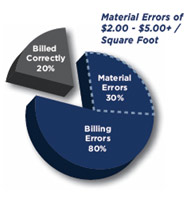Leasehold Improvements Audit Program

CLA did not test compliance with all laws and. Hp Bios Dv6000. AWARDS PROGRAM AUDIT. Leasehold improvements can either be undertaken by landlords.
Reporting Requirements for Annual Financial Reports of State Agencies and Universities Capital Assets Capital Asset Categories Leasehold Improvements Leasehold improvements are improvements made by the lessee (for example, new buildings or improvements to existing structures, etc.). These improvements will revert to the lessor at the expiration of the lease. Moveable equipment or office furniture not attached to the leased property is not considered a leasehold improvement. Leasehold improvements do not have a residual value. Leasehold improvements are capitalized by the lessee and are amortized over the shorter of either: • The remaining lease term –OR– • The useful life of the improvement Improvements made in lieu of rent are expensed in the period incurred. If the lease contains an option to renew and the likelihood of renewal is uncertain, the leasehold improvement is written off over the life of the initial lease term or useful life of the improvement, whichever is shorter.
Once a leasehold improvement is fully amortized, the improvement must be removed from the financial records. For more information, see the in the SPA Process User’s Guide ( FPP N.005).
In order to lease their buildings, real estate companies make improvements to those buildings — either handling the changes themselves, or allowing tenants to make improvements to the leased space. But who pays for these tenant improvements — and who owns them — not only affects the lease rates negotiated but also can have significant tax implications for both parties. What are leasehold improvements, and how are they treated? Tenant or leasehold improvements refer to improvements made to property owned by a landlord to attract tenants and allow them to lease space suitable for an intended use. The options for — and tax implications of — constructing and paying for leasehold improvements vary.
Improvements may be made under the supervision of either the landlord or the tenant, paid for by either the landlord or the tenant, and owned by either party. These facts, as well as whether the lease meets the requirements to be considered an IRC Section 110 short-term lease of retail space, will determine the income tax treatment of these tenant improvements.
The income tax implications of constructing and paying for leasehold improvements are varied, and structuring these lease transactions properly can produce significant tax savings. Tenant improvements that meet the qualifications to be considered “qualified leasehold improvement property” can be depreciated using the straight line depreciation method over a 15-year period. Nonresidential leasehold improvements that don't meet these rules are typically depreciated using the straight line method over 39 years. Aps Marathi Typing Software For Windows 7. If the improvements meet the definition of “qualified improvement property,” 50 percent bonus depreciation may be claimed for these improvements in the year they’re placed in service. And if these improvements meet the requirements to be “qualified real property” under IRC Section 179, they may be eligible to be immediately expensed. Who should make improvements — landlord or tenant?
Tax considerations for leasehold improvements primarily focus on which party pays for the improvements and which party retains ownership them. Generally, the party who pays for and owns the improvements may take the depreciation deductions. But determining ownership isn't always obvious and depends on factors such as who retains the benefits and burdens of ownership, not only on who has legal title to the improvements. Consequently, the parties to the lease should consider including a provision in the lease agreement to document their intent as to who retains ownership of improvements during the lease term. The options are as follows: • When landlords construct and pay for improvements, they own and depreciate the improvements, and there are no tax consequences to the tenant. This is often the simplest solution when the improvements are likely to be used by future tenants once the current tenant vacates the leased space.
• Many leasehold improvements are tenant-specific and will be disposed of or abandoned when the tenant’s lease terminates. In cases like this, landlords are entitled to deduct the remaining tax basis in capitalized leasehold improvements made for a particular tenant upon termination of the lease if such improvements are irrevocably disposed of or abandoned and won’t be used by a subsequent tenant. • If a landlord constructs and owns the improvements and is reimbursed by the tenant as a substitute for rent under the lease, then the landlord must recognize rental income for the amount of the reimbursement and depreciate the improvements as its own assets. The tenant may amortize the cash payment to the landlord over the life of the lease because it's a substitute for rent due under the lease. The same result occurs if the tenant makes and pays for the improvements if treated under the lease arrangement as a substitution for rent.



